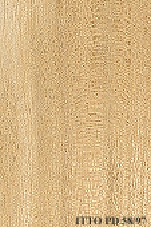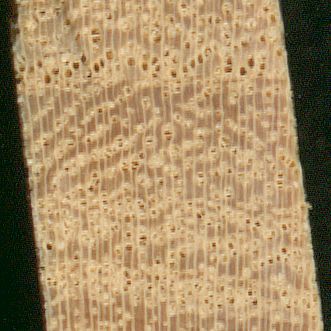
SUNGKAI (Peronema canescens)
Trade Name
Sungkai
Scientific Name
Peronema canescens Jack
Family
Verbenaceae
Common Names
Jati londo (Indonesia); False elder; Sangkae (Thailand); Sakae (Malaysia); Sunkai; Sukai (Malaysia); Koeroes; Cherek; Sungkai (Italy); Sungkai (Sweden); Sungkai (Indonesia); Sungkai (Netherlands); Sungkai (Germany); Kurus (United States of America); Kurus (Germany); Sungkai (United Kingdom); Sungkih (Sumatra); Sungkai (Borneo); Jati sabrang (Indonesia); Sungkai (United States of America); Sungkai (France); Kurus (United Kingdom); Sungkai (Spain)
Scientific Name Synonyms
Peronema heterophyllum Miq.
Description Of The Tree
Botanical Description
It is an evergreen or deciduous shrub or small to medium-sized tree up to 20 m tall. The bole is mostly straight, branchless for up to 9 m, up to 70 cm in diameter, usually with small buttresses. The root system is superficial, with a short taproot.
Natural Habitat
Peronema canescens is common in secondary forests and in open country. It grows best in moist to wet sites in an altitudinal range between 600 to 900 m.
Plantations Available?
Plantations of this species are reported in Indonesia, Thailand and Malaysia.
Wood Identification
Anatomic Description Of Wood
Wood semi-ring porous and/or ring porous. Vessels exclusively solitary (over 90%). Helical thickenings in vessel elements present. Simple perforation plates. Vessel-ray pits similar to intervessel pits in size and shape. Intervessel pits small, 7 micras or les Axial parenchyma in marginal or in seemingly marginal bands. Paratracheal axial parenchyma scanty and/or vasicentric. Homogeneous rays and/or sub-homogeneous rays (all ray cells procumbent). Body ray cells procumbent with one row of upright and/or square marginal cells (Kribs-III).
-
 Wood Macro Photo Radial Plane
Wood Macro Photo Radial Plane
-
 Wood Micro Photo Of Transversal Section
Wood Micro Photo Of Transversal Section
Availability
Cites Status
Unrestricted
General Wood Description
Color
The heartwood and sapwood are indistinct and yellow or light brown in color.
COLOR INDEX (1=Black, 7=Light yellow,white)
5
Grain
The grain is usually straight, but sometimes wavy grain is also reported.
Texture
The wood is reported to be moderately fine to moderately coarse.
Natural Durability
This species is reportedly moderately durable. It is moderately resistant against termites but it is attacked by pinhole borers.
Natural durability index (1= Very high durability, 7=Vey low durability)
3
Internal Growth Stresses
significant residual stresses are reported for this species.
Silica Content
Silica Content: Presence of silica is reported in timber of this species. Amounts over 0.05% may affect the wood processing. Silica Value: 0
Resistance To Impregnation
This timber can be impregnated without difficulty.
Wood Physical Properties
Basic Density or Specific Gravity (O.D. weight/vol. green) (g/cm³)
0.58
Air-dry Density (Weight and volume at 12%MC) (g/cm³)
0.64
Total shrinkage Tangential (Saturated to 0%MC) (%)
7.7
Total shrinkage Radial (Saturated to 0%MC) (%)
5.3
Drying Defects
Ease of Drying: Air drying is reported to be fairly slow. Air drying of boards 15 mm thick takes 4 months, and of boards 40 mm thick 5 months. Drying Defects: Slight cupping, bowing and end-checking may occur.
Dimensional stability ratio (Total Tangential Shrinkage %/Total Radial Shrinkage %)
1.5
Wood Chemical Properties
Wood Mechanical Properties
Bending Strength (MOR),12%MC (kgf/cm²)
606
Stiffness (MOE) 12%MC (kgf/cm²)
83083
Compression parallel to fiber 12%MC (kgf/cm²)
317
Shear strength radial 12%MC (kgf/cm²)
56
Janka hardness (side) 12%MC (kgf)
258
Janka hardness (end grain) 12%MC (kgf)
302
Workability
Sawing
This species is moderately easy to saw.
Rotary Veneer Cutting
This species is reported to be interesting for lamination.
Sliced Veneer
This species is reported to be interesting for lamination.
Blunting Effect
Wood of this species exerts a moderate blunting effect on the cutting tools due to the presence of silica crystals.
Machining
Machining operations are reported to give moderate results.
Planing
Planing operations are reported to be fair.
Moulding
The response of this species to molding operations is fair.
Boring
It is easy to bore.
Gluing
This species is easy to glue.
Sanding
It is easy to sand.
REFERENCED USES
End Uses Summary
HOUSING GENERAL, FURNITURE AND CABINETS, PLYWOOD AND VENEER, CONTAINERS, truck bodies, truck flooring
General Housing
- 10 - Silica in Timbers
Furniture Cabinets
- 21 - Tropical timbers of the world. Part III-Southeast Asian and Oceanian Species.
Panels, Veneers
- 25 - Directory of Timber Trade Malaysia
Truck Body
- 53 - Timbers of the New World
Truck Flooring
- 54 - Bulletin of the Government Forest Experiment Station N.157: Identification of Tropical Woods
Please Provide Information To View Producer Information